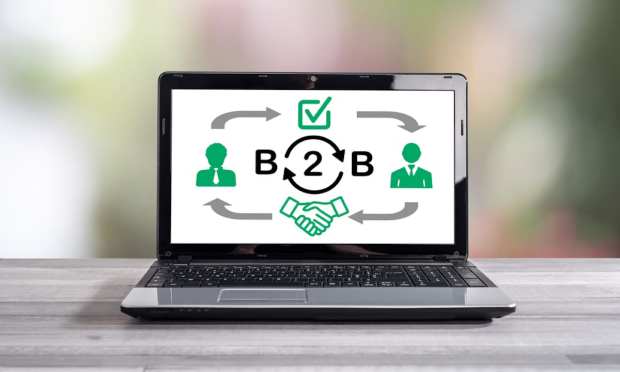Why Firms Should Focus on Individuality to Build Their Own B2B Ecosystems

To play ball in today’s B2B landscape, firms need to home in on their advantage and build an ecosystem, or moat, around what is unique about them specifically.
Sound familiar? For years, a similar approach has been the long pole in the tent of various firms’ B2C strategies, and it is now moving to the B2B realm.
B2B markets are becoming increasingly saturated and complex, meaning firms must adapt and innovate to secure their position in the industry, as well as to retain and grow their core customer base.
B2B ecosystems are hard to replicate, which is why they are worth building.
Executives on Home Depot’s second-quarter 2023 earnings call told investors just that.
“What we are building as far as our ecosystem for the Pro consumer is hard and will take some time,” said Hector Padilla, Home Depot’s executive vice president of outside sales and service. “The good news is that it will also be very hard to replicate.”
“Today, we’re very encouraged by the signals that we are getting from our Pro customers as they engage with different pieces of the ecosystem,” Padilla added. “…Pros continue to engage not only in the supply chain assets that we have built, but they are visiting our stores on a more frequent basis.”
In an age of abundant choices and intense competition, customer loyalty has become elusive. B2B clients are no longer content with standardized offerings; they demand solutions that align with their unique challenges and objectives.
The Shifting Dynamics of B2B Relationships
Traditionally, B2B interactions were characterized by rigid processes, long sales cycles and limited communication channels. However, the digital revolution has radically transformed the way businesses engage with each other.
In a world where competition is only a click away, commercial loyalty has emerged as a necessity. And loyalty is being built byte by byte on digitally-decisioned and personalized offerings.
“There’s going to be a tipping point where either you have a progressive, modern customer experience, or you don’t,” Scott Simpson, senior vice president at Capital One Trade Credit, told PYMNTS in an interview published Monday (Aug. 14). “And I think those that choose to act sooner are going to be the ones that tend to win customers, delight customers and keep them. Those that don’t will steadily watch their businesses erode.”
By tailoring products, services and experiences to the specific requirements of each client, businesses can demonstrate a deeper understanding of their customers’ needs. This not only enhances customer satisfaction but also establishes a sense of loyalty that becomes the bedrock of enduring B2B relationships — and a key differentiator.
Research in the report “Digital Payments: Expanding the Payments Palette,” a PYMNTS and Corcentric collaboration, found that there has been a growing recognition of the benefits of digitization.
The biggest story of this year is not just one of efficiency, but also innovation.
See also: Why B2B Tech Will Drive the Next Innovation Cycle
Competitive Moats Provide Indispensable Shields
“It’s important to meet customers where they’re doing business,” Todd Manning, head of commercial strategy, M&A and alliances at American Express told PYMNTS in July.
“Small businesses, midsize businesses, large corporate customers are [now] expecting an experience more similar to what they get in the consumer part of their life, with intuitive use cases and a streamlined process,” he said.
Complexity is inherent in the B2B space, where transactions often involve intricate supply chains and processes as well as multiple stakeholders.
But by providing clients with a hassle-free experience from the first touchpoint to the final implementation, businesses can differentiate themselves from competitors who might struggle to navigate these complexities. A seamless journey not only improves efficiency but also leaves a lasting positive impression, strengthening the overall partnership.
After all, flexibility engenders efficiency, which supports long-term growth.
PYMNTS has long been tracking how today’s B2B tech innovations, which are inherently meant to organize information and better structure previously unorganized relationships, are now allowing firms involved to capture easy-win efficiencies that have historically been lost among legacy inefficiencies and manually reliant procedural gaps.
“We are in that economic cycle where every cost you can beat out of the process is necessary right now,” Ingo Money CEO Drew Edwards told PYMNTS in an interview published last month. “…[H]ow to save money and how to eliminate those manual steps in the processes is top of mind.”
And in the B2B space, where firms are amassing vast amounts of data from various touchpoints, harnessing this data can unlock profound insights into customer behavior, preferences and pain points, creating a holistic, personalized experience for commercial partners that may stump peers and competitors when they attempt to replicate it.
For all PYMNTS B2B coverage, subscribe to the daily B2B Newsletter.

